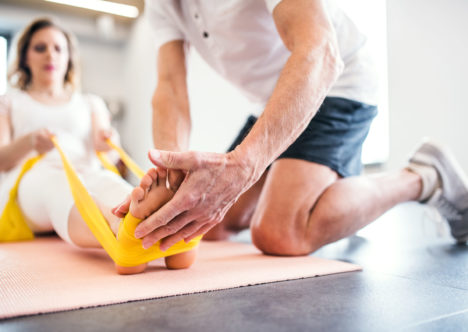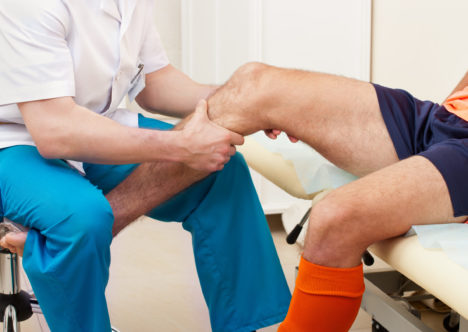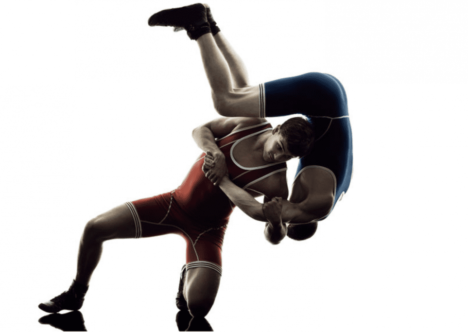Use our convenient online scheduler to book an appointment now.

In an earlier post, we discussed what that nagging pain in the front of your knee might be. Here I will explain, in more detail, why it may have started. As you may recall, runner’s knee or patellofemoral pain syndrome is a common overuse injury to the knee, specifically to the knee cap joint. It typically causes pain in the front of your knee, particularly with activities that involve having your knee in a bent position such as running, jumping, squatting, sitting and walking on stairs.
Runner’s Knee: Causes
There are 5 main causes of Runner’s Knee. Often a number of these will be present at the same time.
1. Weakness. Relative weakness is perhaps the most common cause of runner’s knee. Usually the weakness is manifested by a weakened core or a relative weakness of your pelvic, hip or thigh muscles. Often all of these are present. This may come about because a new strenuous activity exceeds your normal strength. It may also occur when an abrupt cause for weakness, such as an injury to your affected leg, has occurred. This can result in your weakened strength being inadequate for even everyday activities.
2. Bent knee activities. The forces on the bone and soft tissue structures at the patellofemoral joint dramatically increase when the knee is bent. Increasing the frequency of these activities can therefore lead to overload of these structures and result in runner’s knee.
3. Excessive body weight or weight you carry. Although excessive body weight can mean being overweight, it can also mean being too heavy for your present strength. A young person who recently grew several inches and put on several pounds may develop patellar pain although they are the proper weight for their size. Their lower body muscles just have not had a chance to develop and so they are relatively weak for their new larger size. Additionally, your knee cap joint can’t distinguish between body weight and the weight you are lifting. So activities that require carrying weighted objects can lead to these symptoms as well. Either way, when we squat down the force on our knee cap joint is 5-8 times our total body weight combined with the weight we are carrying. As a result, little increases in either weight can make a big difference.
4. Condition of knee cap joint cartilage. Cartilage caps the ends of your bones. It has no nerve fibers. Bones do. When the cartilage at the ends of your bones is healthy, these bones can withstand higher forces than when the cartilage is unhealthy. As we age, or after trauma, the cartilage at our patellofemoral joint can break down. When this happens, the kneecap joint will become painful at lower levels of force and activity.
5. Knee cap instability. If the knee cap moves around too much, it can cause pain. The bones may rub on each other incorrectly, the muscles around the patella may need to work “overtime” to stabilize your patella or the other soft tissues around this joint may get “stretched” from the excessive motion. All these can can cause pain and lead to runner’s knee.
Runner’s knee is a common painful problem that is caused from a number of factors. If you are experiencing pain in the front of your knee, it is probably a good time to get your knee assessed by a sports medicine knee specialist to determine what is wrong and how to fix it.
Join our Mailing List
TCO provides patients with orthopedic problems the trusted resources and patient-centered advice they need to “Feel Better. Move Better. Be Better.”
© 2024 Town Center Orthopaedics | All Rights Reserved


